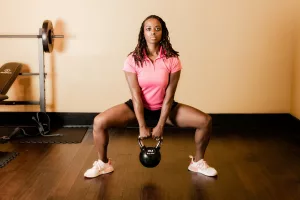Maintaining physical fitness as we age is not just about staying active; it’s about enhancing our quality of life by preserving our independence, health, and well-being. A well-rounded fitness routine can make a significant difference, incorporating cardiovascular exercise, strength training, flexibility, and balance exercises. Each component plays a critical role in ensuring that older adults live vibrant, healthy lives.
Cardiovascular Exercise
Benefits of Cardiovascular Exercise
Aerobic activities, such as walking, swimming, or cycling, are the cornerstone of cardiovascular fitness. These exercises are designed to get your heart rate up and improve your body’s ability to use oxygen effectively. The benefits are numerous:
- Heart Health: Regular cardio strengthens the heart and lungs, leading to improved cardiovascular efficiency.
- Mood Boost: Aerobic exercise releases endorphins, the body’s natural mood elevators, reducing symptoms of depression and anxiety.
- Weight Management: Maintaining a healthy weight is easier with consistent cardio, which burns calories and boosts metabolism.
Practical Tips for Incorporating Cardio
- Start Slow: If you’re new to exercise, begin with 10-minute sessions and gradually increase the duration as your stamina improves.
- Mix It Up: Engage in a variety of activities to prevent boredom and work different muscle groups.
- Make It Social: Join a walking group or a community fitness class to stay motivated.
Real-Life Example
Consider Mary, a 68-year-old who was new to exercise. She started with short walks around her neighborhood, eventually joining a local swimming class. Over a year, she noticed an improvement in her stamina, mood, and even made new friends.
Strength Training
Importance of Strength Training
As we age, we naturally lose muscle mass, a condition known as sarcopenia. Strength training is essential for counteracting this process. It helps maintain muscle mass, bone density, and overall functional independence.
- Bone Health: Resistance training increases bone density, reducing the risk of fractures.
- Injury Prevention: Strong muscles support joints and reduce the likelihood of falls.
- Enhanced Daily Function: Strengthening exercises improve the ability to perform daily tasks, from carrying groceries to rising from a chair.
Getting Started with Strength Training
- Focus on Form: Proper technique is crucial to avoid injuries. Consider working with a trainer to learn the basics.
- Use Resistance Bands: These are affordable, portable, and effective for building strength.
- Schedule Consistently: Aim for two to three sessions per week, targeting major muscle groups.
Strength Training Exercises
- Squats: Great for building leg and core strength.
- Lunges: Improve balance and leg strength.
- Push-Ups: Strengthen the upper body and core.
- Rows: Target the back and improve posture.
Case Study
John, a 72-year-old retiree, began strength training with light weights and resistance bands. Over six months, he increased his strength, noticed less joint pain, and found daily activities easier to perform.
Flexibility Exercises
Enhancing Flexibility
Flexibility exercises are vital for maintaining a good range of motion and preventing injuries. As we age, muscles and tendons can become stiff, leading to decreased mobility.
- Improved Movement: Stretching allows for better movement in daily activities.
- Reduced Muscle Soreness: Regular stretching alleviates muscle tension and soreness.
- Better Posture: Flexibility contributes to a more aligned body posture.
Incorporating Flexibility Into Your Routine
- Stretch Regularly: Include stretches in your daily routine, ideally after a warm-up or workout.
- Try Yoga or Pilates: Both are excellent for improving flexibility and offer additional benefits such as stress reduction.
- Hold Stretches: Aim to hold each stretch for 15-30 seconds without bouncing.
Example of Flexibility Routine
- Neck Stretches: Gently tilt your head side to side.
- Shoulder Rolls: Loosen tight shoulder muscles.
- Hamstring Stretches: Improve leg flexibility.
- Back Stretch: Relieve tension in the spine.
Personal Insight
Emma, a 74-year-old yoga enthusiast, credits her flexibility routine for her agility and pain-free joints. She practices yoga thrice a week and reports feeling more youthful and energetic.
Balance Training
Why Balance Training Matters
Falls are a significant concern for older adults, often leading to serious injuries. Balance exercises are critical for preventing falls and maintaining stability.
- Fall Prevention: Improved balance reduces the risk of falls.
- Proprioception: These exercises enhance the body’s ability to sense its position in space.
- Confidence in Movement: Better balance fosters confidence in performing daily activities.
Balance Exercises to Try
- Standing on One Leg: Simple yet effective for improving balance.
- Heel-to-Toe Walks: Enhance coordination and stability.
- Tai Chi: A gentle form of martial arts known for improving balance and reducing stress.
Practical Implementation
- Consistency is Key: Perform balance exercises 2-3 times a week.
- Progress Gradually: Start with simpler exercises and increase difficulty as balance improves.
- Seek Guidance: Consider taking a class or working with a professional to ensure proper technique.
Example of Balance Training Success
George, an 80-year-old who frequently experienced falls, started a Tai Chi class at his local community center. Within months, he reported fewer falls and felt more confident moving around his home and neighborhood.
Tailoring a Fitness Routine
While the components of a fitness routine are universal, the specifics should be tailored to each individual’s needs, preferences, and abilities. Here’s how to create a personalized plan:
- Assess Your Current Fitness Level: Understand your starting point to set realistic goals.
- Set Achievable Goals: Whether it’s walking a certain distance or lifting a specific weight, set goals that are challenging yet attainable.
- Listen to Your Body: Pay attention to signs of overexertion or discomfort and adjust accordingly.
- Consult Professionals: A fitness trainer or healthcare provider can provide valuable insights and adjustments tailored to your individual health needs.
Overcoming Common Challenges
Motivation and Consistency
Staying motivated can be a challenge, particularly if progress seems slow. Here are some strategies:
- Find a Workout Buddy: Exercising with a friend can make workouts more enjoyable and keep you accountable.
- Track Your Progress: Keep a journal or use a fitness app to track improvements and celebrate milestones.
- Mix It Up: Variety prevents boredom and keeps the body challenged.
Managing Health Conditions
Chronic conditions such as arthritis or heart disease shouldn’t deter you from exercising. In fact, exercise often helps manage these conditions. Here’s how:
- Adapt Exercises: Modify activities to accommodate limitations. For instance, water aerobics is gentle on joints.
- Monitor Intensity: Use the talk test—if you can carry on a conversation while exercising, the intensity is just right.
- Consult Your Doctor: Before starting any new exercise program, especially with pre-existing conditions, seek medical advice.
Embracing Technology
Technology can be a valuable ally in optimizing fitness routines for older adults. Consider these options:
- Fitness Trackers: Devices like Fitbit or Apple Watch help monitor activity levels, heart rate, and sleep patterns.
- Online Classes: Access a wide range of workouts from the comfort of your home through platforms like YouTube or subscription services.
- Apps: Use apps like MyFitnessPal to track nutrition and exercise, ensuring you’re meeting your fitness goals.
Social and Psychological Benefits
Exercise offers more than physical benefits; it also enhances social and psychological well-being:
- Community Engagement: Joining group classes or clubs fosters social connections and reduces feelings of isolation.
- Cognitive Function: Regular physical activity has been shown to improve cognitive function and reduce the risk of cognitive decline.
- Self-Esteem: Achieving fitness goals boosts self-confidence and self-esteem.
Conclusion
By incorporating a comprehensive fitness regimen that includes cardiovascular, strength, flexibility, and balance training, older adults can significantly improve their physical fitness, health, and overall quality of life. The journey to better health is personal and ongoing, requiring patience, consistency, and a willingness to adapt. Remember, it’s never too late to start, and the benefits extend far beyond the physical, touching every aspect of life in meaningful ways. So lace up those sneakers, embrace the journey, and enjoy the vitality that comes with an active lifestyle.



